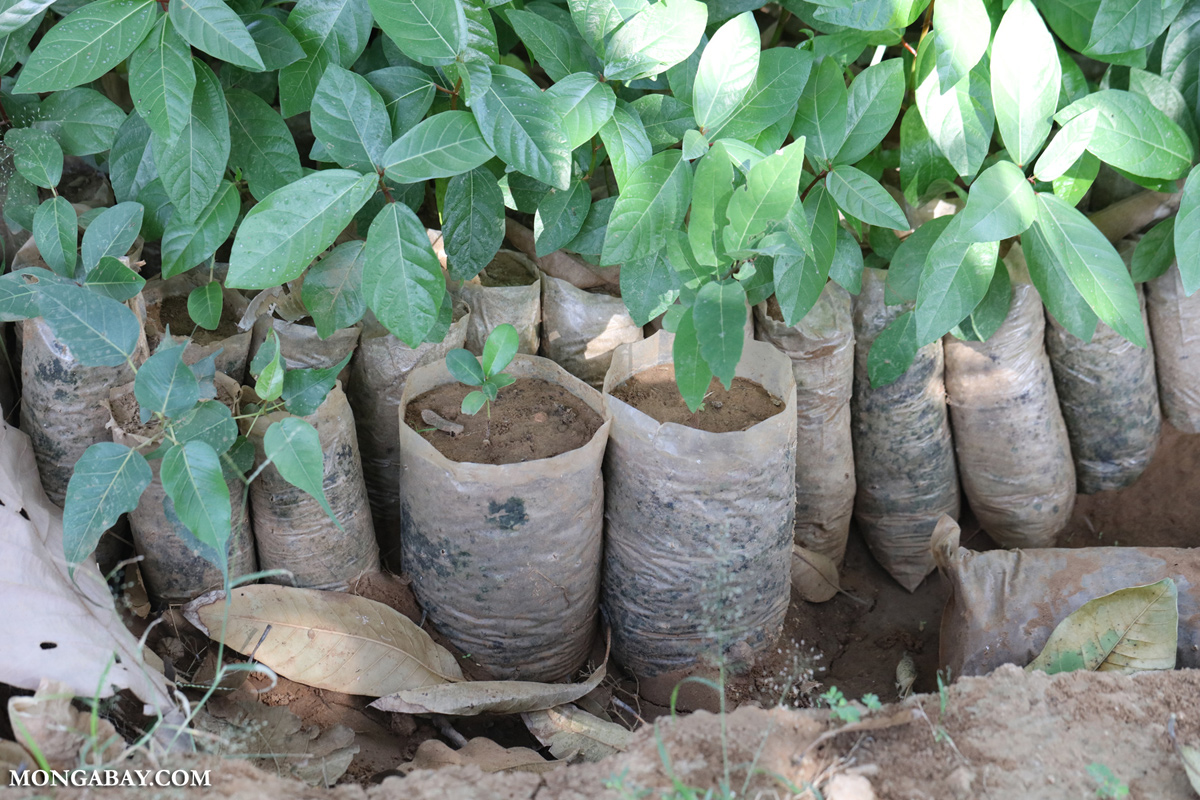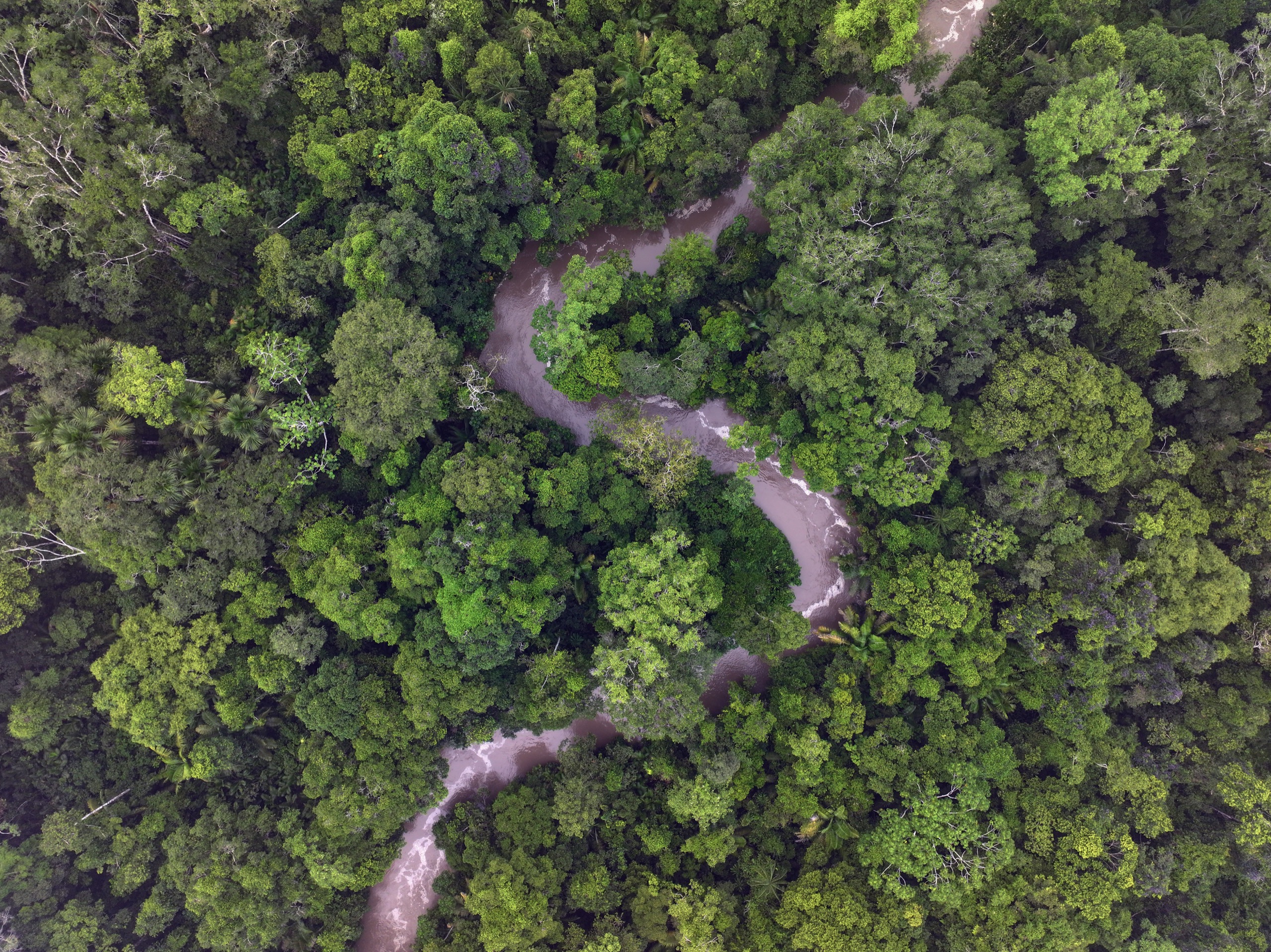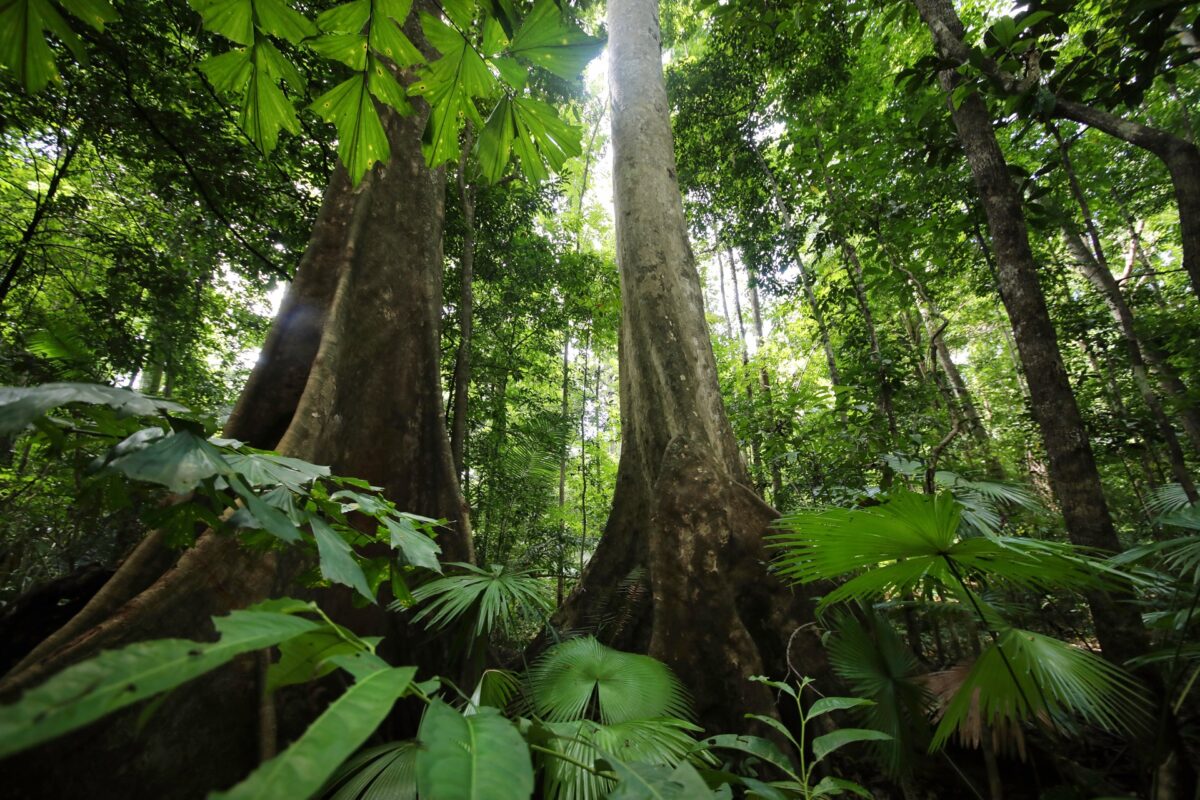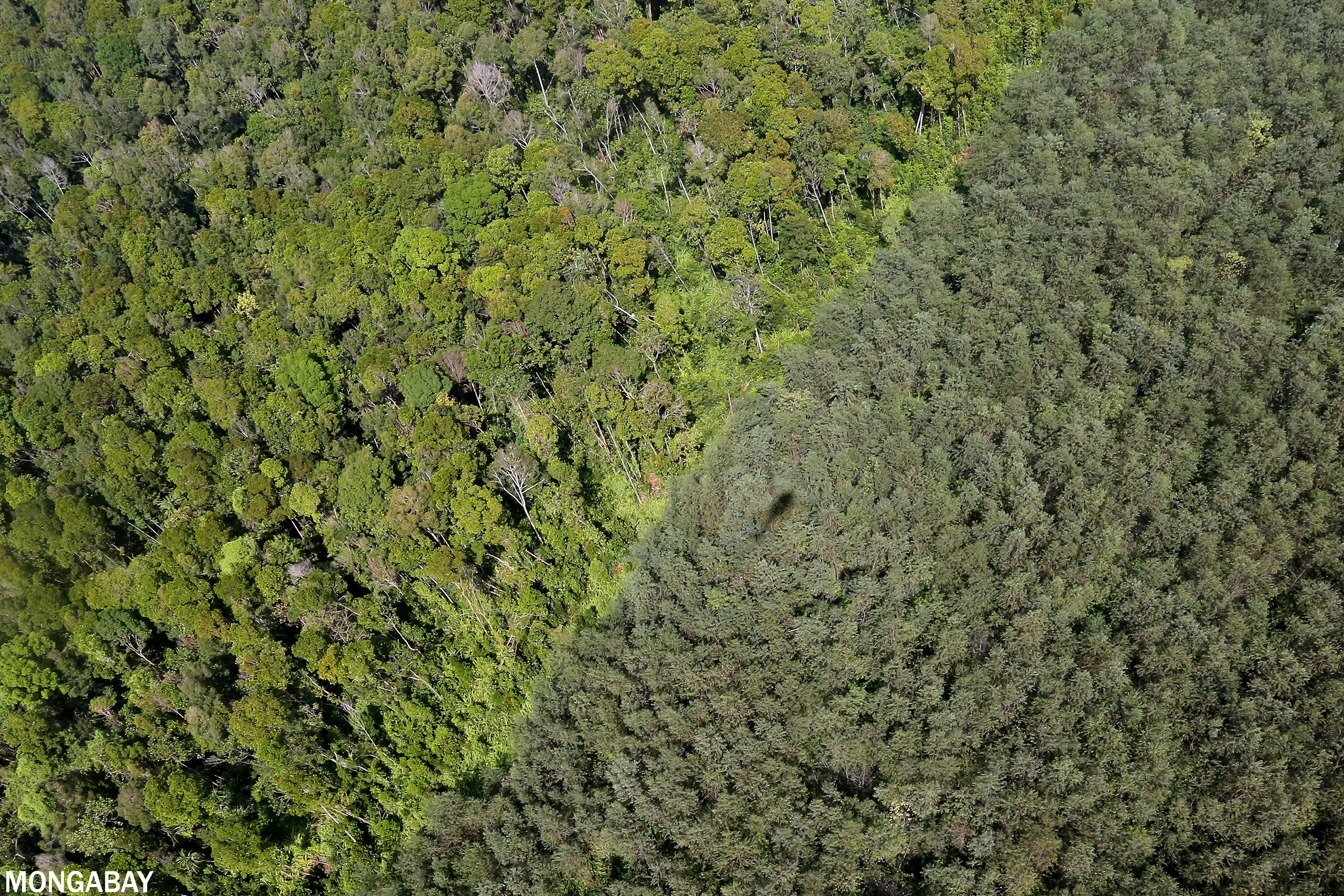- Sociologist Thomas Rudel explores the social and political forces behind global reforestation, arguing that forest regrowth is rarely automatic and often depends on human decisions and local conditions.
- He critiques top-down climate pledges for failing to engage with smallholder farmers and Indigenous communities, who are frequently the key actors in both forest loss and recovery.
- Rudel highlights the importance of “corporatist coalitions” that link global funders with grassroots actors, enabling more flexible and locally effective forest restoration efforts.
- Rudel spoke with Mongabay founder and CEO Rhett Ayers Butler in July 2025.
Reforestation has long been viewed as one of the more hopeful climate interventions: a process that can, in theory, restore degraded landscapes, absorb carbon dioxide, and support biodiversity. But as sociologist Thomas Rudel makes clear, the return of forests is rarely a passive process. His decades of research highlight a more complex truth—one in which reforestation is shaped not only by ecological conditions, but by economic shifts, social movements, and, crucially, the actions and choices of people on the ground.
Rudel’s interest in forest change dates back to the late 1960s, when he served in the Peace Corps in Ecuador’s Amazon region. There, as a young volunteer assisting with land measurement and community-building efforts, he witnessed firsthand how forests were being cleared to make way for new settlements. The experience would go on to shape the trajectory of his academic career. After earning his doctorate, Rudel began conducting fieldwork with colonists and Indigenous communities in Ecuador, tracing both the causes of deforestation and the conditions that allow forests to regrow.
His latest book, Reforesting the Earth: The Human Dimensions of Reforestation, draws on that lifetime of scholarship. It focuses not just on ecological recovery, but on the political and social factors that determine whether reforestation takes root—and lasts. Natural climate solutions, Rudel argues, hold enormous promise, but only if they account for the lived realities of small farmers, Indigenous communities, and the institutions that govern land use.

In a recent conversation with Mongabay, Rudel reflected on why top-down forest pledges so often fall short, how grassroots initiatives have succeeded in places where larger programs have struggled, and what a “double movement” of forest history might mean for the planet’s future. He explored the often-overlooked role of smallholder farmers, who, while lacking in political power, have been central to the reforestation of many lands. He discussed the tension between carbon-focused plantations and ecologically rich natural forests, and why neither alone will solve the climate crisis.
He also emphasized the importance of “corporatist coalitions,” partnerships that link global actors—like funders or NGOs—with local communities, creating structures that are both scalable and context-sensitive. These coalitions, he argued, can overcome the limitations of purely state-led or grassroots approaches by balancing funding security with local responsiveness.
Throughout the conversation, Rudel returns to a core idea: That reforestation is not simply a technical or ecological problem. It is a human one.
While technological solutions and climate finance schemes dominate much of the discourse, Rudel’s work reminds us that forests come back when people allow them to, protect them, and sometimes actively cultivate them. As the world grapples with intersecting crises of climate and biodiversity loss, that insight could prove critical.
What follows is a wide-ranging discussion with a researcher whose views are grounded in both personal experience and a lifetime of inquiry—one that challenges easy narratives about forest recovery and points toward more grounded, people-centered approaches to reforestation.

An interview with Thomas Rudel
Mongabay: We’ve done an interview before, but for people perhaps unfamiliar with your work, could you briefly describe the inspiration for your efforts, your background, and what you do today?
Rudel: I had my first encounter with issues of forest cover losses and gains when I joined the Peace Corps right after college in the late 1960s and early 1970s. I worked in the Amazon basin in Ecuador measuring land, helping colonists build communities, and establishing peaceful relations with nearby indigenous peoples.
After the Peace Corps and graduate school, I began doing field research on landscape changes and teaching at Rutgers University in New Jersey. The research focused on both deforestation and reforestation among colonists and Shuar in Ecuador with whom I worked when I was in the Peace Corps.

After I retired in 2017, I took to writing books and decided to focus a book on reforestation, in part because it is a story with hopeful elements to it.
Mongabay: You describe reforestation as a “natural climate solution.” What makes it such a promising climate strategy?
Rudel: Natural climate solutions are particularly promising counters to climate change because they are inexpensive, regrowth occurs without much human effort; they are large scale, promising to deliver about 1/3 of the total abatement of greenhouse gas emissions necessary to stabilize the climate, and finally, they promise to preserve biodiversity in addition to stabilizing the climate.
Mongabay: One of your central points is that forests don’t just grow back on their own—they’re shaped by people. What do you mean by that?
Rudel: People play a vital role in reforestation processes, both directly as planters of trees but also indirectly as people who trigger the regrowth of forests on agricultural lands when they abandon agricultural lands and trees begin to reoccupy the land spontaneously.

Mongabay: You argue that top-down initiatives like the New York Declaration on Forests haven’t lived up to expectations. Why have these pledges often fallen short?
Rudel: Top down initiatives like the New York Declaration have difficulty implementing their pledges because they fail to establish reliable working relationships with local actors who work the land or abandon it, and in so doing, shape the extent of reforestation occurring in locales.
Mongabay: Can you share an example of a reforestation effort that actually worked—and why it succeeded where others didn’t?
Rudel: China’s ‘grain for green’ program worked because the local officials and participating smallholders were dedicated to the program’s success.
Tree planting programs in West Africa have been less successful because the planters did not persist in caring for the newly planted seedlings.
Mongabay: You talk about a “double movement” in forest history: first deforestation, then restoration. What triggered this shift toward reforestation in some places?
Rudel: The ‘double movement’ refers to a theoretical construct in Polanyi’s ‘the Great Transformation’ in which environmental destruction gives way to a counter-movement.
In this case extensive deforestation would engender resistance which in turn would slow deforestation and in some instances spur reforestation. With reforestation, the counter movement would come in several forms. The loss of tropical forests spurred efforts by deep-pocked conservationists to preserve tropical forests. Alternatively, the exhaustion of pastures under continuous use over large stretches of land spurred many small farmers to abandon the land and move elsewhere, like cities. With their departure, forest regrowth begins. Deforestation in this manner begets reforestation. One movement spurs a second movement: A double movement.

Mongabay: In your view, why is the role of small farmers so often overlooked in reforestation plans?
Rudel: For two reasons: Smallholders frequently get ignored in reforestation efforts because they are not well organized. This disadvantage is compounded by the tendency of smallholders to cluster in remote areas (‘regions of refuge’) where lands are cheaper and NGOs are less likely to operate.
Mongabay: How do grassroots and community-led forest efforts compare in impact to large-scale government or corporate initiatives?
Rudel: Large scale programs have the advantage of relatively secure sources of funds, given their preferential access to the funds of the central government, but their inability to engage in flexible implementation of their program makes them less successful overall. Local programs are flexible in adapting to local circumstances, but frequently do not have secure sources of funds.
Mongabay: You emphasize the importance of what you call “corporatist coalitions” in restoring forests. Can you explain what that means, in lay terms?
Rudel: Corporatist coalitions work because of the various organizational forms that reforestation efforts can take, they do the best job of linking the global with the local through compacts that they make periodically with each other.
Mongabay: What role do Indigenous communities play in successful forest restoration, based on your research?
Rudel: Indigenous organizations are both the most effective defenders of primary forests (because of their high level of mobilization) and the most cost effective defenders of rain forests because they live there.
Mongabay: Many people assume that forest regrowth is mostly happening in wealthy countries. Is that true—and what are we missing if we think that way?
Rudel: Forest regrowth through land abandonment occurs among poor people, inhabiting agriculturally marginal lands, oftentimes in rich countries. What is missing from this picture is the small-scale reforestation that occurs in thickly settled, impoverished rural regions in the Global South. These are the domestic forests that replace kitchen gardens out the back door of a house, sometimes in peri-urban locations. Community forests created and expanded by communities in Mexico and southern India provide additional good examples of reforestation that we will not find in wealthy countries.
Mongabay: You’ve spent time in the Ecuadorian Amazon. How did your personal experiences there shape this book?
Rudel: My experiences in the Ecuadorian Amazon in my early twenties were pivotal experiences for me personally. They shaped what I did with the rest of my life, what I studied and what I taught.

I wrote Reforesting the Earth: The Human Dimensions of Reforestation out of convictions that I first developed during my early experiences in the Amazon rain forests. Helping people destroy forests, as I did then, spurred me to look for the counter trends, with the hope that they would reduce the devastation wrought by deforestation and climate change.
Mongabay: What surprised you most in the course of researching global reforestation trends?
Rudel: I don’t know if this was a ‘surprise’, but I certainly came away from the experience with a renewed appreciation for the courage displayed by indigenous peoples and other activists in defending forests from those who would destroy them.
Mongabay: You note that some tree plantations, like eucalyptus, can capture carbon very quickly—but they’re not the same as natural forests. How should we think about that tradeoff?
Rudel: We are in an ‘all hands on deck’ emergency with climate change, so we need to accept some less than optimal solutions like Eucalyptus plantings, with restrictions on harvesting rates.

Mongabay: What would you say to someone who sees reforestation as a silver bullet solution to climate change?
Rudel: Reforestation is not a silver bullet solution, rather it is like an arrow in a quiver of arrows, all of which we must use if we are to prevail in our struggle with climate change.
Mongabay: Looking ahead, where do you see the greatest opportunities—and challenges—for reforesting the Earth in the next decade?
Rudel: Political mobilization in the forest rich countries represents both the greatest opportunities and challenges in the struggle around climate change. The current contrasts between Brazil, China, and the United States in policy provide a case in point







